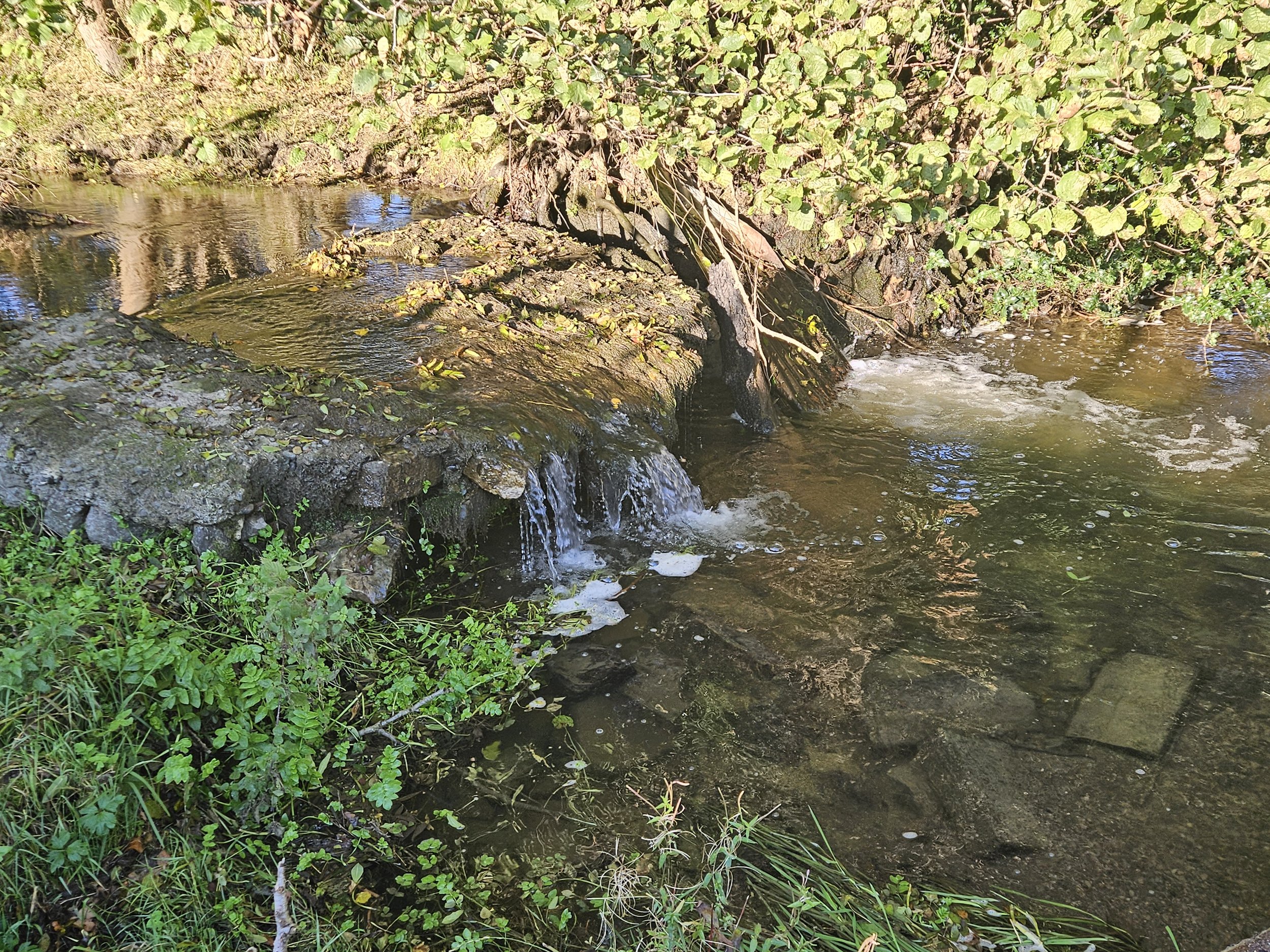Restoring Fish Passage On A Clwyd Tributary
In the picturesque rivers of North Wales, fish like salmon, trout, and eels embark on epic journeys, migrating upstream to spawn. But sometimes, man-made obstacles can throw them off course. One such barrier was a small weir on a tributary of the Afon Clwyd. Though upstream offered perfect habitat for these fish, the weir posed a big challenge, blocking some species completely and making life tough for others.
Before weir notching
Weirs, while often used to control water levels or for historical industrial purposes, can have negative impacts on river ecosystems. They disrupt the natural flow of water, creating barriers for migratory fish and eels, reducing biodiversity, and altering habitats both upstream and downstream. Fish unable to pass these barriers may struggle to reach their spawning grounds, leading to declining populations over time. Additionally, weirs can affect sediment movement, which can change the river's shape and degrade vital habitats.
The North Wales Rivers Trust decided it was time for a change. With a head difference of about 60cm, simply removing the weir wasn’t an option. Sudden changes in river flow could cause erosion, leading to the river cutting back and losing its natural shape. Instead, we opted for a creative solution that balanced the needs of the river and its wildlife: we removed half of the weir on the left bank and built a small rocky ramp in its place.
After modification
This clever modification maintains the head difference, but now, the barrier is passable for migratory fish and eels alike. Species that once struggled now have smooth passage upstream, gaining access to prime habitats that had been just out of reach. It's a small change with big benefits for the river ecosystem—and a perfect example of how small tweaks can make a huge impact for nature!
Now, we can look forward to seeing more fish thriving in our rivers. Whether you're a local angler or just a nature enthusiast, this restoration project is a win for wildlife and everyone who loves the waterways of North Wales!
This work is being completed thanks to fisheries mitigation funding in partnership with Cyfoeth Naturiol Cymru / Natural Resources Wales


